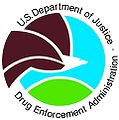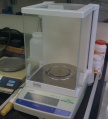Difference between revisions of "Compounding"
From Rx-wiki
| Line 1: | Line 1: | ||
| + | The art of pharmaceutical compounding has ancient roots dating back to early hunter gatherer societies. These ancient civilizations utilized pharmaceutical compounding for religion, grooming, keeping the healthy well, treating the ill and preparing the dead. These ancient compounders produced the first oils from plants and animals. They discovered poisons and the antidotes. They made ointments for wounded patients as well as perfumes for customers. | ||
| + | |||
| + | Today compounding is still a necessary skill for many pharmacists and pharmacy technicians. Extemporaneous compounding is required for prescription orders that are not commercially available in the requested strength or dosage form. | ||
| + | |||
| + | There are two types of pharmaceutical compounding, sterile and non-sterile. This Entry will primarily focus on non-sterile compounding. | ||
| + | |||
| + | ==Basic steps for preparing compounded drug preparations== | ||
| + | There is a general order of work for all extemporaneous compounding. By following a procedure you will be able to work more effectively. | ||
| + | #Carefully read and interpret the prescription or medication order. | ||
| + | #Note any missing or confusing information; clarify, gather, and add this information to the drug order. | ||
| + | #Check the dose,dosage regimen, dosage form, and route of administration for appropriateness. | ||
| + | #Determine a preliminary compounding procedure. | ||
| + | #Perform necessary calculations. If possible have a colleague check calculations. | ||
| + | #Select required ingredients. It is the responsibility of the pharmacist to choose appropriate quality ingredients for compounding. The preferred grade for this is USP or NF. If an official USP or NF ingredient is not available, the pharmacist should use professional judgment in the selection of an alternative source so that the safety and purity of the ingredient is assured. This may require requesting a certificate of analysis from the supplier. | ||
| + | #Choose appropriate compounding equipment. | ||
| + | #Using recommended techniques, prepare the product. | ||
| + | #A visual inspection of the product should be done. | ||
| + | #Choose an appropriate container and package the preparation. | ||
| + | #Determine an appropriate expiration date (beyond-use date) | ||
| + | #Label container and include recommended auxiliary labels | ||
| + | #Document the compounding process. | ||
| + | |||
| + | ==Legal issues== | ||
| + | |||
| + | As we recently studied in the [[Food and Drug Administration Modernization Act]], there is a special exemption to ensure continued availability of compounded drug products prepared by pharmacists to provide patients with individualized therapies not available commercially. The lack of commercial availability is the primary determining factor as to whether or not a pharmacy is legally allowed to compound a medication that a physician has written for. | ||
| + | |||
| + | The legal duties of the pharmacy technician are to perform nonjudgmental technical duties associated with the preparation and distribution of prescription drugs, provided that a pharmacist verifies the accuracy of all acts, tasks, and functions performed by the technician and that the technician functions under the direct supervision of and is responsible to a pharmacist. Accurate record keeping can be facilitated by a pharmacy technician who can maintain a control log of all ingredients, lot numbers, and amounts used in compounded preparations, as well as assigned prescription numbers. | ||
| + | |||
| + | The pharmacist is responsible for the actions of the technician and the quality of each preparation. The pharmacist must evaluate the preparation of the compounded prescription as it is prepared by the pharmacy technician and must review that prescription before it is dispensed. | ||
| + | |||
| + | ==Lab safety== | ||
| + | |||
| + | The vast majority of chemicals used in compounding have a relatively low safety risk, but that does not mean that '''all''' items used in compounding have little or no risk. There are several things that should be kept in mind when compounding: | ||
| + | *Personal Protective Equipment (PPE) | ||
| + | **gloves | ||
| + | **goggles or face shield | ||
| + | **lab coats or gowns | ||
| + | **masks or respirators | ||
| + | **ventilation hoods | ||
| + | *Eye Wash Station | ||
| + | *Material Safety Data Sheets (MSDS) | ||
| + | *Initial incident reports in case of an injury (no matter how minor) | ||
| + | |||
==Equipment== | ==Equipment== | ||
| Line 51: | Line 94: | ||
</gallery> | </gallery> | ||
</center> | </center> | ||
| + | ==Weighing and measuring== | ||
| + | |||
| + | ===Weighing=== | ||
| + | |||
| + | ===Measuring=== | ||
| + | |||
| + | ==Definitions== | ||
| + | |||
| + | ==Compounded dosage forms== | ||
| + | |||
| + | ==Labeling== | ||
| + | |||
| + | ==See also== | ||
| + | |||
| + | ==References== | ||
Revision as of 07:46, 21 May 2012
The art of pharmaceutical compounding has ancient roots dating back to early hunter gatherer societies. These ancient civilizations utilized pharmaceutical compounding for religion, grooming, keeping the healthy well, treating the ill and preparing the dead. These ancient compounders produced the first oils from plants and animals. They discovered poisons and the antidotes. They made ointments for wounded patients as well as perfumes for customers.
Today compounding is still a necessary skill for many pharmacists and pharmacy technicians. Extemporaneous compounding is required for prescription orders that are not commercially available in the requested strength or dosage form.
There are two types of pharmaceutical compounding, sterile and non-sterile. This Entry will primarily focus on non-sterile compounding.
Contents
Basic steps for preparing compounded drug preparations
There is a general order of work for all extemporaneous compounding. By following a procedure you will be able to work more effectively.
- Carefully read and interpret the prescription or medication order.
- Note any missing or confusing information; clarify, gather, and add this information to the drug order.
- Check the dose,dosage regimen, dosage form, and route of administration for appropriateness.
- Determine a preliminary compounding procedure.
- Perform necessary calculations. If possible have a colleague check calculations.
- Select required ingredients. It is the responsibility of the pharmacist to choose appropriate quality ingredients for compounding. The preferred grade for this is USP or NF. If an official USP or NF ingredient is not available, the pharmacist should use professional judgment in the selection of an alternative source so that the safety and purity of the ingredient is assured. This may require requesting a certificate of analysis from the supplier.
- Choose appropriate compounding equipment.
- Using recommended techniques, prepare the product.
- A visual inspection of the product should be done.
- Choose an appropriate container and package the preparation.
- Determine an appropriate expiration date (beyond-use date)
- Label container and include recommended auxiliary labels
- Document the compounding process.
Legal issues
As we recently studied in the Food and Drug Administration Modernization Act, there is a special exemption to ensure continued availability of compounded drug products prepared by pharmacists to provide patients with individualized therapies not available commercially. The lack of commercial availability is the primary determining factor as to whether or not a pharmacy is legally allowed to compound a medication that a physician has written for.
The legal duties of the pharmacy technician are to perform nonjudgmental technical duties associated with the preparation and distribution of prescription drugs, provided that a pharmacist verifies the accuracy of all acts, tasks, and functions performed by the technician and that the technician functions under the direct supervision of and is responsible to a pharmacist. Accurate record keeping can be facilitated by a pharmacy technician who can maintain a control log of all ingredients, lot numbers, and amounts used in compounded preparations, as well as assigned prescription numbers.
The pharmacist is responsible for the actions of the technician and the quality of each preparation. The pharmacist must evaluate the preparation of the compounded prescription as it is prepared by the pharmacy technician and must review that prescription before it is dispensed.
Lab safety
The vast majority of chemicals used in compounding have a relatively low safety risk, but that does not mean that all items used in compounding have little or no risk. There are several things that should be kept in mind when compounding:
- Personal Protective Equipment (PPE)
- gloves
- goggles or face shield
- lab coats or gowns
- masks or respirators
- ventilation hoods
- Eye Wash Station
- Material Safety Data Sheets (MSDS)
- Initial incident reports in case of an injury (no matter how minor)
Equipment
Below is a list of equipment commonly used for extemporaneous compounding.
- Mortar and pestle
- Class A prescription balance (Class III balance)
- Electronic balance
- Analytical balance
- Glassine papers (weighing papers)
- Weighing boats (weighing canoes)
- Ointment slab or pad
- Spatula
- Spatula cards
- Scoopula
- Glass stirring rods
- Hot plate
- Magnetic stir
- Beakers
- Graduated cylinder
- Erlenmeyer flask
- Droppers
- Funnels
- Oral syringes
- Ointment jars and tubes
- Prescription vials
- Bottles










